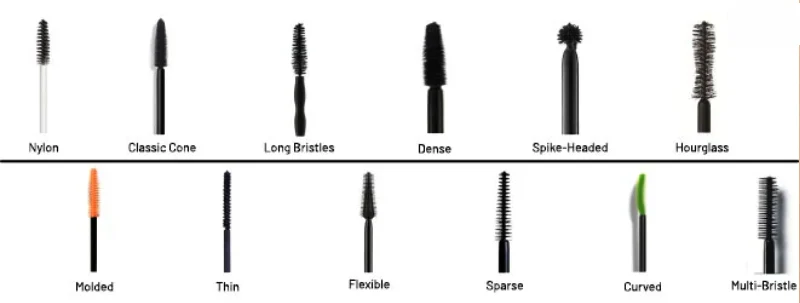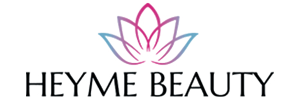![]()
Before diving into materials and shapes, let’s start with a truth every lash professional knows: the brush is more than a tool—it’s the heart of lash artistry.
Whether you’re applying mascara, separating extensions, or grooming natural lashes, the right brush can transform results from average to stunning.
As an eyelash brush manufacturer, we’ve studied thousands of designs over the years—testing different fibers, handles, and core structures—to understand how each small variation influences lash performance. We’ve learned that no single brush fits all. The perfect eyelash brush depends on lash type, formula texture, and even user skill.
Imagine a musician trying to play a symphony with the wrong instrument—no matter how talented, the results fall short. That’s exactly what happens when beauty artists or consumers use the wrong lash brush.
Our goal in this article is to help you decode every detail—so that by the end, you’ll not only understand how to choose the perfect eyelash brush but also appreciate the craftsmanship behind it.

The Manufacturing Perspective: Why Eyelash Brush Design Matters
From a manufacturer’s standpoint, eyelash brush design is both science and craftsmanship.
A tiny variation in fiber stiffness, diameter, or coil tension can drastically alter lash separation, curl lift, and volume distribution.
We manufacture brushes for global cosmetic brands and professional makeup artists, and the design process begins with one simple question: “What lash look are we creating?”
For example:
- A dense spiral brush gives dramatic volume.
- A slim tapered brush defines and lengthens.
- A curved brush hugs the natural lash line for maximum lift.
Every prototype we produce goes through precision molding, fiber selection, and quality control. Our engineers measure brush symmetry and fiber spacing under magnification to ensure consistent mascara pickup and release.
That’s why when professionals choose a brush from a reputable manufacturer, they’re not just choosing a shape—they’re choosing decades of engineering research and lash expertise.
Understand the Different Types of Eyelash Brush Materials

The first step in finding the perfect brush is knowing what it’s made of. Material defines performance—how it grips the product, coats lashes, and maintains its structure over time.
1. Nylon Bristles
Nylon remains one of the most popular materials for eyelash brushes. It offers excellent elasticity and durability, making it suitable for both natural and waterproof mascaras.
Manufacturers like us use ultra-fine nylon fibers that taper to a micro-tip, giving smoother separation without clumping.
2. Silicone Brushes
Silicone brushes are revolutionizing modern lash tools. Known for their flexibility and precision, they’re ideal for defining and separating lashes. The smooth texture ensures even coating and prevents product buildup—perfect for consumers who prefer a clean, clump-free look.
3. Rubber and Thermoplastic Elastomer (TPE)
These eco-friendly materials are heat-resistant and customizable. We often use TPE for custom OEM/ODM orders because it allows unique shapes that traditional nylon brushes can’t achieve. Rubber-based brushes also pair well with sensitive-eye formulas.
4. Natural Fiber Brushes
While less common in modern manufacturing, natural bristles provide a softer texture and organic appeal. However, they can absorb more product, which may not suit lighter mascara formulas.
Each material brings a unique feel. That’s why the best manufacturers blend material science with ergonomics, ensuring the brush aligns with both the formula and the desired lash effect.
Choosing the Right Brush Shape for Your Lash Type
Shape is where personalization truly begins. The geometry of an eyelash brush determines curl, lift, separation, and volume.
1. Classic Spiral Brush
A timeless favorite. The spiral design evenly coats each lash, providing fullness and definition. It’s perfect for beginners and daily users.
2. Curved Brush
Designed to mimic the natural lash line, curved brushes create a natural lift effect—especially useful for clients with straight or downward lashes.
As manufacturers, we often tweak curvature angles (typically between 20°–30°) to optimize how mascara spreads across the lash root.
3. Cone-Shaped Brush
With a narrow tip and broad base, this brush allows precise coating of both inner and outer lashes. It’s ideal for short or corner lashes that other brushes might miss.
4. Ball Tip Brush
Compact and precise, this shape is favored by makeup artists for targeted application—especially on lower lashes or edges.
5. Hourglass Brush
This modern shape helps push lashes upward at the center while fanning out the sides. It’s often used in volumizing mascaras.
Each design we manufacture undergoes repeated testing with different formulas. A “perfect brush” isn’t about what’s trending—it’s about matching design to lash anatomy.
The Science Behind Brush Density and Fiber Arrangement
You’ve probably noticed that two brushes with the same shape can perform very differently. That’s because density and fiber spacing control product delivery.
- Dense Brushes: Great for volume and drama; they pick up more mascara.
- Sparse Brushes: Provide lightweight definition and better separation.
- Cross-Layered Designs: Alternate fiber lengths to balance thickness with control.
In our factory, we use computer-guided coil winding machines to ensure uniform bristle distribution. This microscopic precision means smoother coating, zero gaps, and lashes that look naturally full.
We also adjust the core wire tension (measured in Newtons) to fine-tune brush flexibility—small details that most consumers never see but instantly feel during application.
Handle Design and Ergonomics—The Unsung Hero
The brush handle might seem secondary, but it’s crucial for comfort and control.
As manufacturers, we’ve studied the ergonomics of hand motion and grip angles. A slightly longer handle (between 75–90 mm) allows smoother wrist movement and consistent lash direction.
Material also matters. For professional tools, we often recommend lightweight aluminum or recyclable ABS plastic—they balance stability with eco-friendliness.
We even offer custom textures or anti-slip coatings for salons and makeup artists who demand steady performance during long sessions. Because sometimes, a tool’s comfort can make the difference between a quick touch-up and a flawless lash finish.
Matching the Brush to the Mascara Formula
This is where true technical expertise comes in. Every mascara formula—whether lengthening, volumizing, or waterproof—demands a brush engineered to complement its viscosity.
- Thick or Creamy Formulas: Require firm, widely spaced bristles to avoid clumping.
- Light or Watery Formulas: Pair better with fine, dense bristles that hold more product.
- Waterproof Mascara: Works best with silicone or rubber brushes that resist buildup.
As a professional manufacturer, we often collaborate directly with cosmetic brands during R&D stages, testing brush prototypes with multiple formula viscosities until we find the perfect match. It’s a precise dance of chemistry and design.
Professional Advice: Common Mistakes When Choosing an Eyelash Brush
Through decades of experience, we’ve seen how small mistakes can lead to disappointing lash results. Here are the top ones to avoid:
- Choosing by appearance, not function. A stylish brush doesn’t always perform well—focus on material and density.
- Ignoring lash type. Fine lashes need gentle brushes; thick lashes can handle firmer ones.
- Skipping hygiene. Brushes should be cleaned or replaced regularly to prevent bacterial buildup.
- Overusing old brushes. Fibers lose shape over time, affecting performance.
In our manufacturing workshops, we train partners and distributors to educate consumers on maintenance and hygiene, because a well-cared-for brush delivers professional results longer.
Industry Standards and Quality Assurance
Quality in eyelash brush production isn’t a coincidence—it’s built through strict industry standards.
We follow ISO 9001 and GMP-certified manufacturing processes, ensuring every brush passes durability, elasticity, and cosmetic safety tests.
Each production batch undergoes:
- Fiber stress testing (to ensure shape retention)
- Chemical resistance tests (against common mascara ingredients)
- Heat deformation analysis (for use in hot climates)
We also comply with REACH and RoHS European standards, meaning our products are free from harmful substances.
When clients choose brushes from a certified manufacturer, they’re not just buying a product—they’re buying trust, safety, and precision engineering.
Customer and Distributor Testimonials
- From a Global Mascara Brand:
“Your team helped us design a brush that perfectly matched our vegan mascara. The curl hold and separation improved by 35% in our consumer trials. That’s not luck—that’s expertise.” - From a Professional Makeup Artist:
“I didn’t realize how much brush shape mattered until I tested your curved silicone design. It lifts without clumps and feels weightless.” - From a Distributor in Germany:
“The OEM packaging and quick turnaround made it easy to launch our private label. The quality speaks for itself—zero complaints in two years.”
These testimonials show what we strive for: consistency, innovation, and partnership.
FAQs
What’s the difference between a mascara wand and an eyelash brush?
The terms are often used interchangeably, but technically, a mascara wand includes the handle and brush head, while the eyelash brush refers to the bristled component itself. Manufacturers design them separately for precision and compatibility.
How often should I replace my eyelash brush?
For personal use, every 2–3 months is ideal. In professional salons, brushes should be single-use or disinfected after each client to maintain hygiene.
What brush is best for short lashes?
A slim, tapered, or cone-shaped brush works best—it allows better reach to inner and lower lashes without smudging.
Can brush shape affect lash health?
Indirectly, yes. A poorly designed or overly stiff brush can tug or overcoat lashes, leading to breakage. Soft-tipped, evenly spaced fibers are safer and more comfortable.
What are eco-friendly options for eyelash brushes?
We now manufacture brushes from biodegradable TPE and recyclable plastics, combining sustainability with performance. Eco-conscious brands increasingly request these materials.
How can I identify a high-quality eyelash brush?
Look for uniform bristle alignment, smooth coil tension, and balanced flexibility. High-quality brushes feel firm but not scratchy, release mascara evenly, and maintain shape after multiple uses.
Why do professional brands customize their brushes instead of buying standard ones?
Because brush performance defines product identity. Two mascaras can have identical formulas but produce different results depending on the brush. Customization ensures signature looks—something manufacturers like us specialize in.
Conclusion
Choosing the right eyelash brush isn’t just about preference—it’s about understanding materials, mechanics, and design precision. From the elasticity of nylon fibers to the ergonomics of the handle, every element shapes the final lash look.
As manufacturers, we’ve learned that the most loved brushes are born from collaboration—between engineers, chemists, makeup artists, and the end users who inspire innovation.
So the next time you pick up a mascara wand, remember: behind that tiny brush lies years of craftsmanship, testing, and dedication—all to help you create lashes that speak confidence with every blink.
